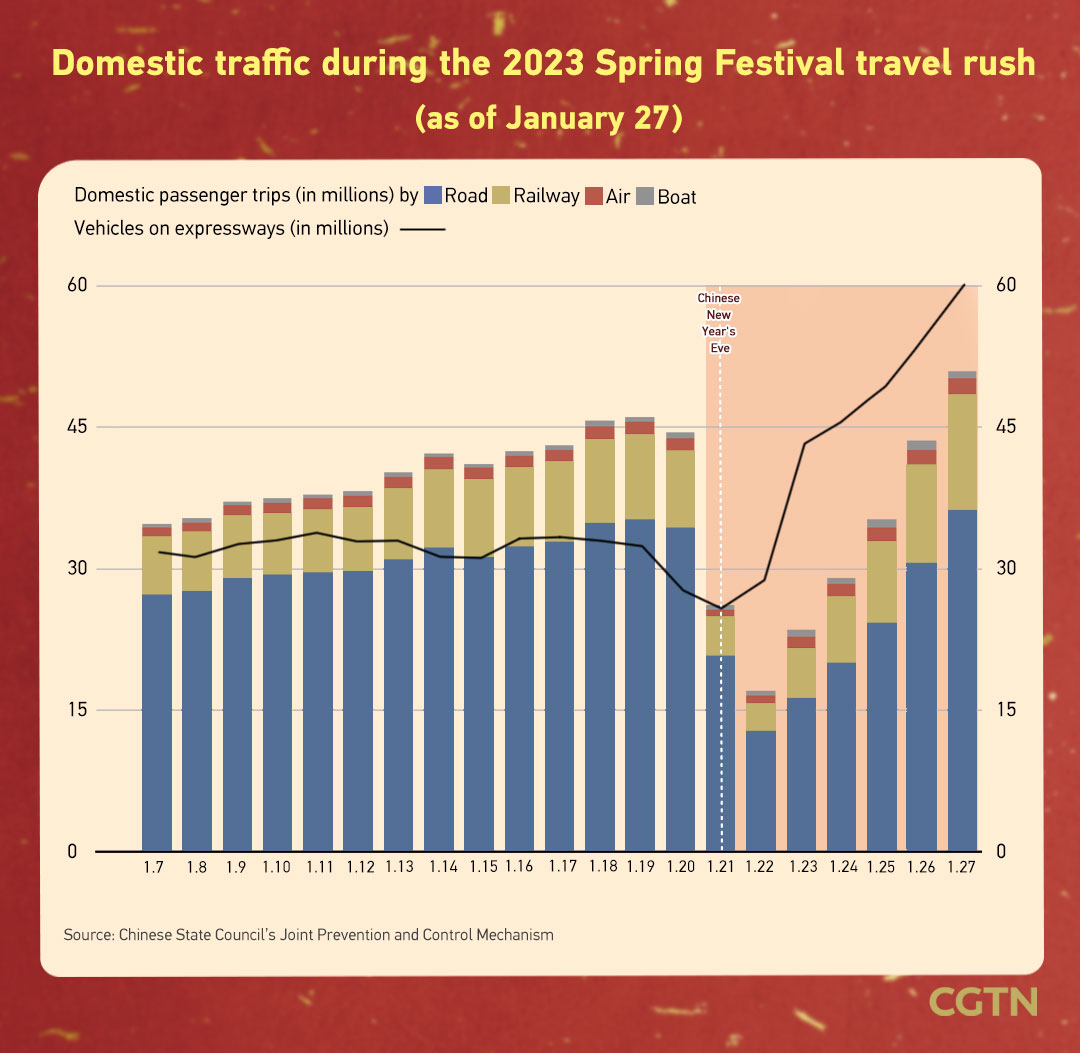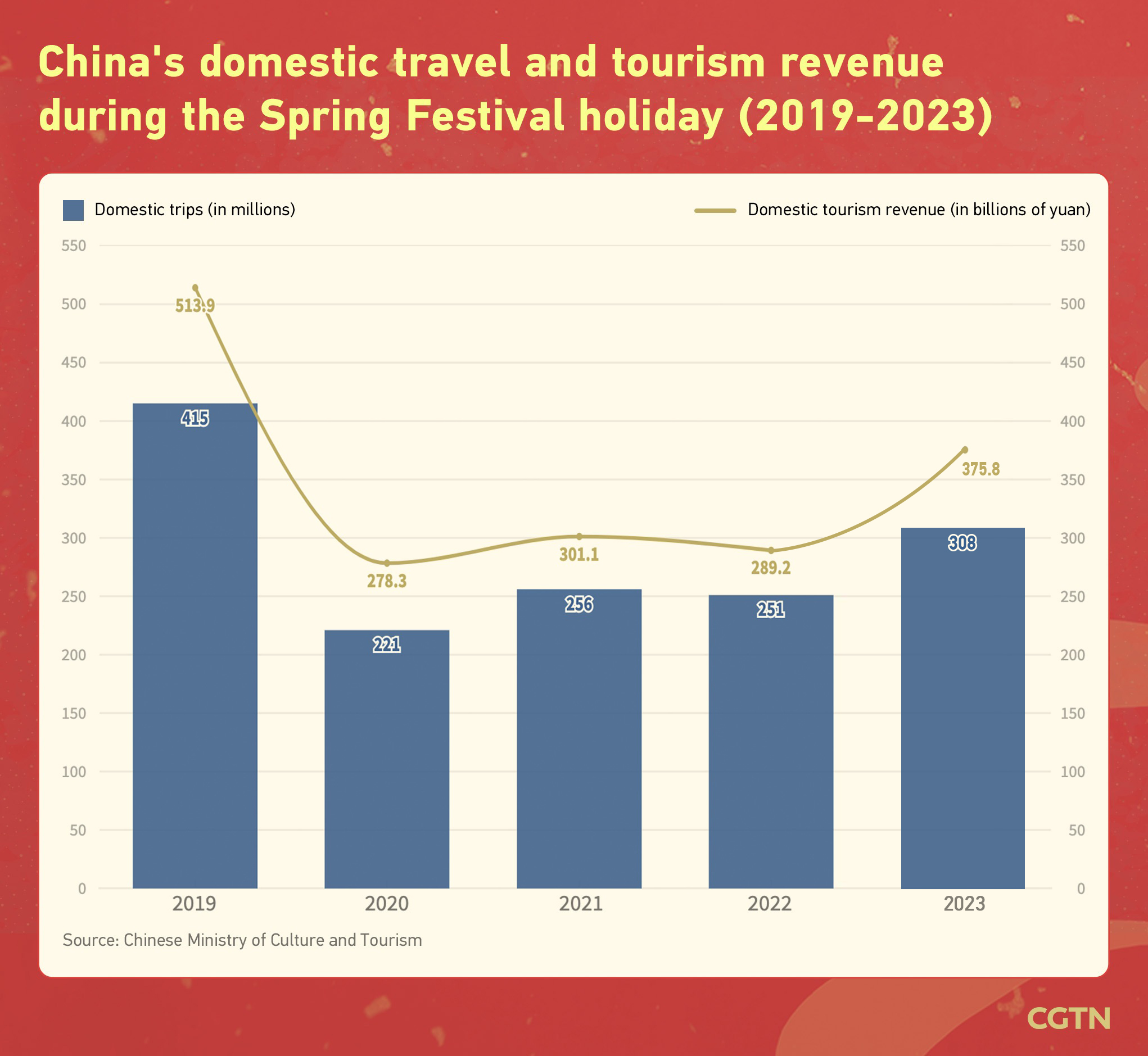China's domestic traffic saw a surge of people returning from family reunions and festival celebrations to work as the Spring Festival holiday ended on Friday, data from the Chinese Ministry of Transport (MOT) showed.
The total number of domestic passenger trips for this year's 40-day Spring Festival travel rush is expected to reach about 2.1 billion, almost twice as much as 2022 or 70.3 percent of the 2019 figure, according to the MOT.
Spring Festival travel rush, also known as "Chunyun," will run from January 7 to February 15 this year, while the seven-day Spring Festival holiday began from the Chinese Lunar New Year’s Eve, which fell on January 21 this year.
As of January 27, the country's railways, roads, waterways and airports recorded over 780 million trips in total. Expressways nationwide reported a total flow of 770 million vehicles, according to Chinese State Council's Joint Prevention and Control Mechanism.
During the first 20 days of the Spring Festival travel rush - January 7-26 - passenger trips were 52.8 percent above the same period in 2022, but still 47.0 percent below the pre-pandemic level in 2019, according to the MOT.

More people chose to travel before the seven-day Spring Festival holiday. The lowest passenger flow fell on January 22, the first day of the Chinese New Year, with 17.1 million trips. From January 23, the passenger flow gradually picked up as people visited relatives and friends.
The country's shift in COVID-19 response from Class A to Class B has brought about a dramatic change this year, as travelers no longer need to present health codes and negative nucleic acid test results or undergo temperature checks at railway stations and airports.

During the seven-day Spring Festival holiday, more than 300 million domestic trips were made, nearly 90 percent of pre-pandemic levels, and the tourism revenue reached 375.8 billion yuan (about $55.4 billion), up nearly 30 percent year on year, according to Chinese Ministry of Culture and Tourism.
Pent-up demand is being released "as many people flocked to scenic spots, watched firework shows and crowded into restaurants and hotels," Lu Ting, chief China economist at Nomura wrote in an email note on Saturday.
(Data edited by Yao Nian; graphics designed by Xing Cheng, Liu Shaozhen, Gao Hongmei)